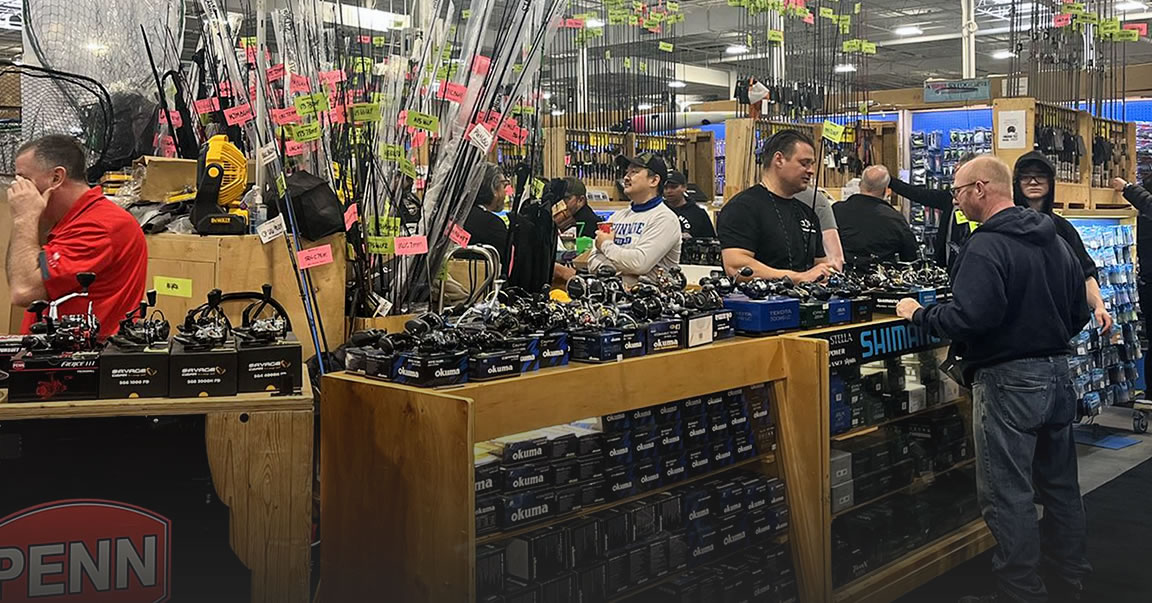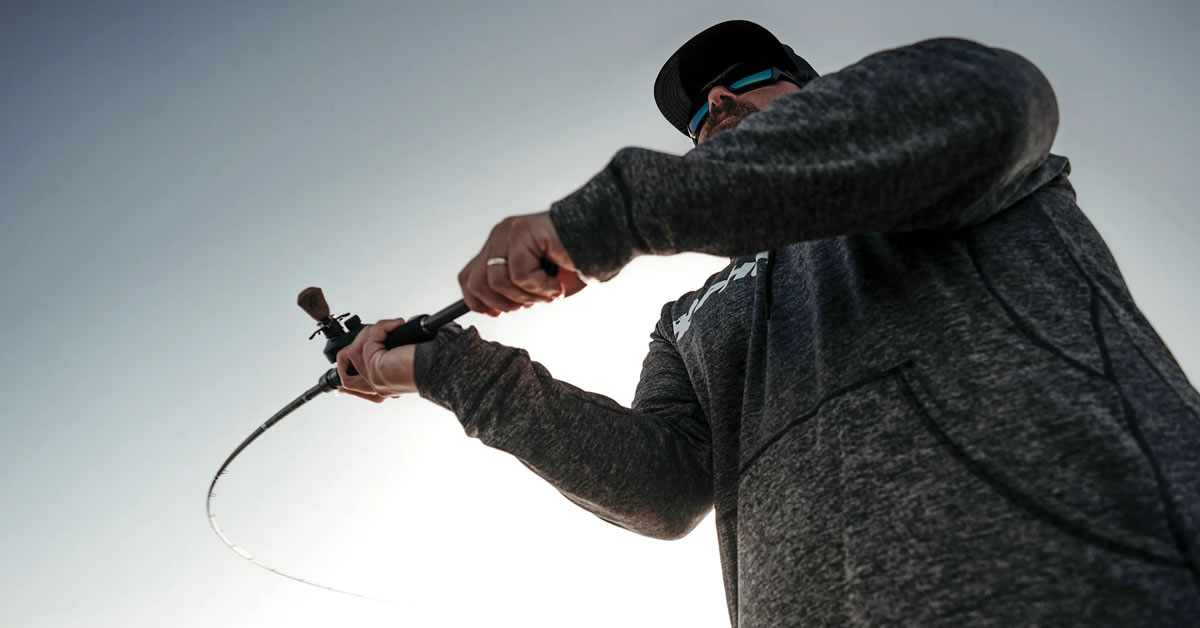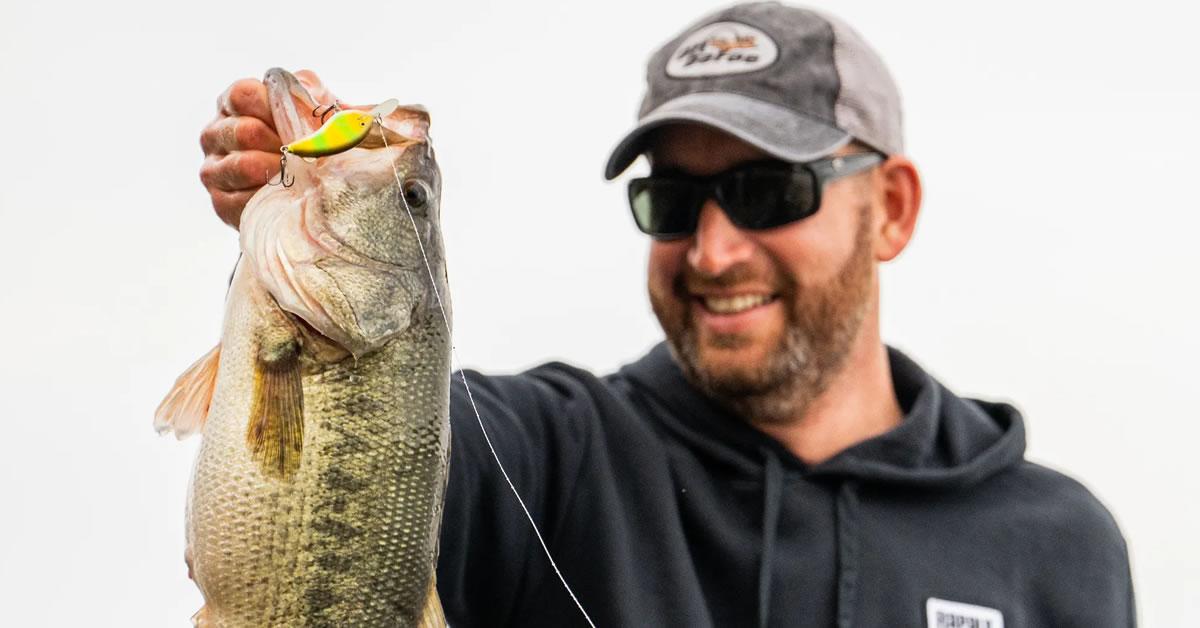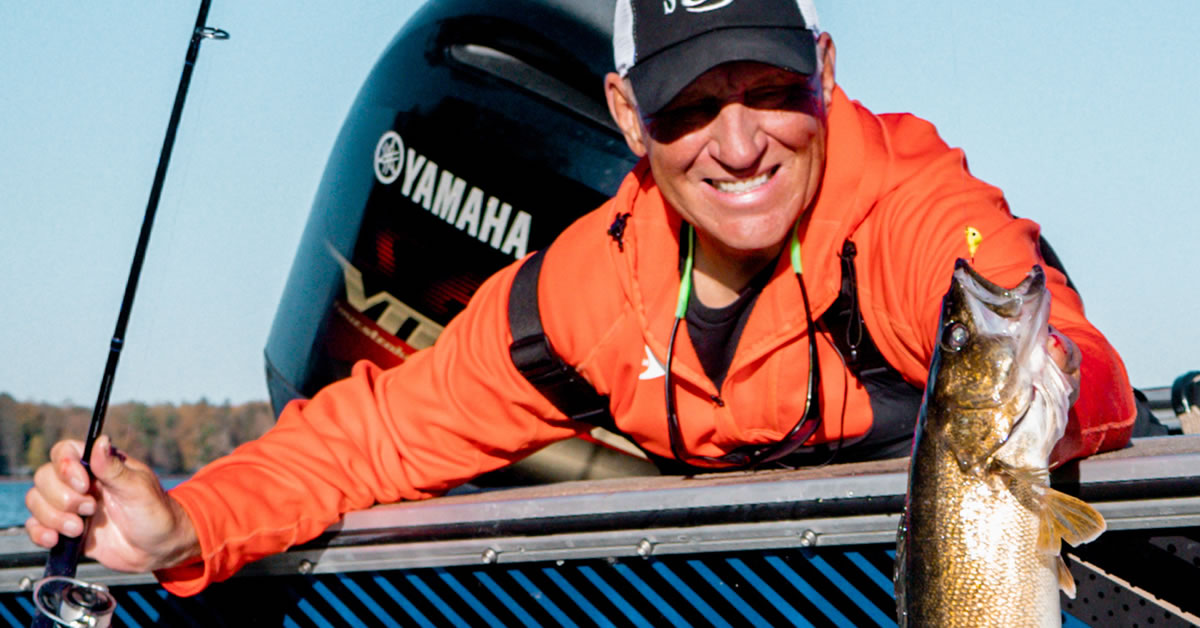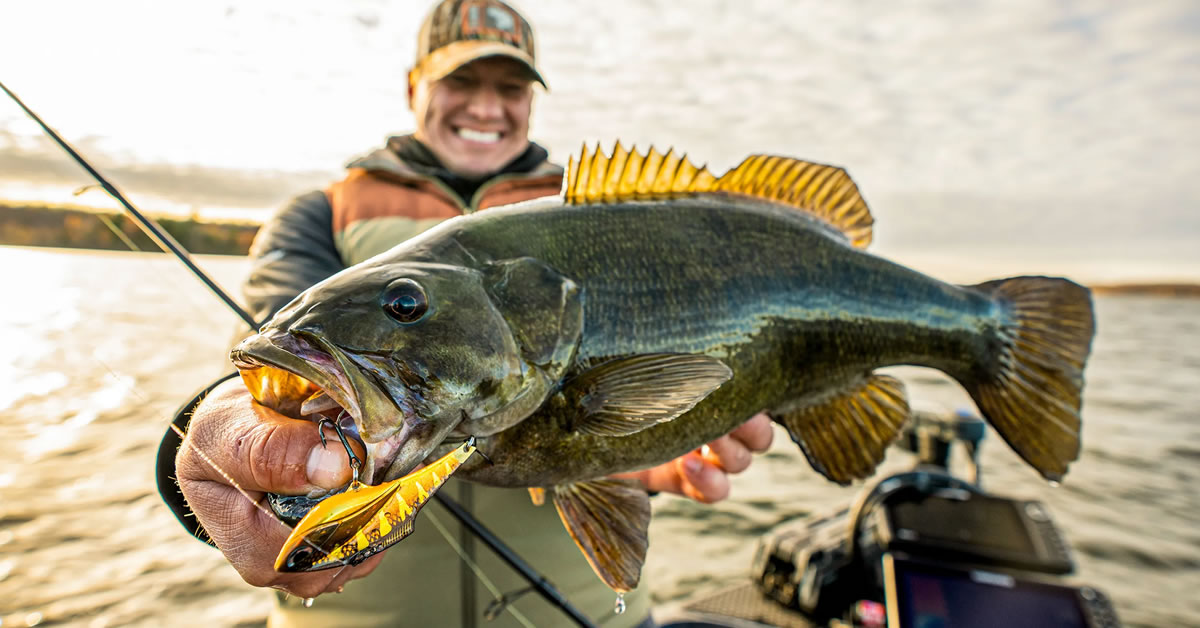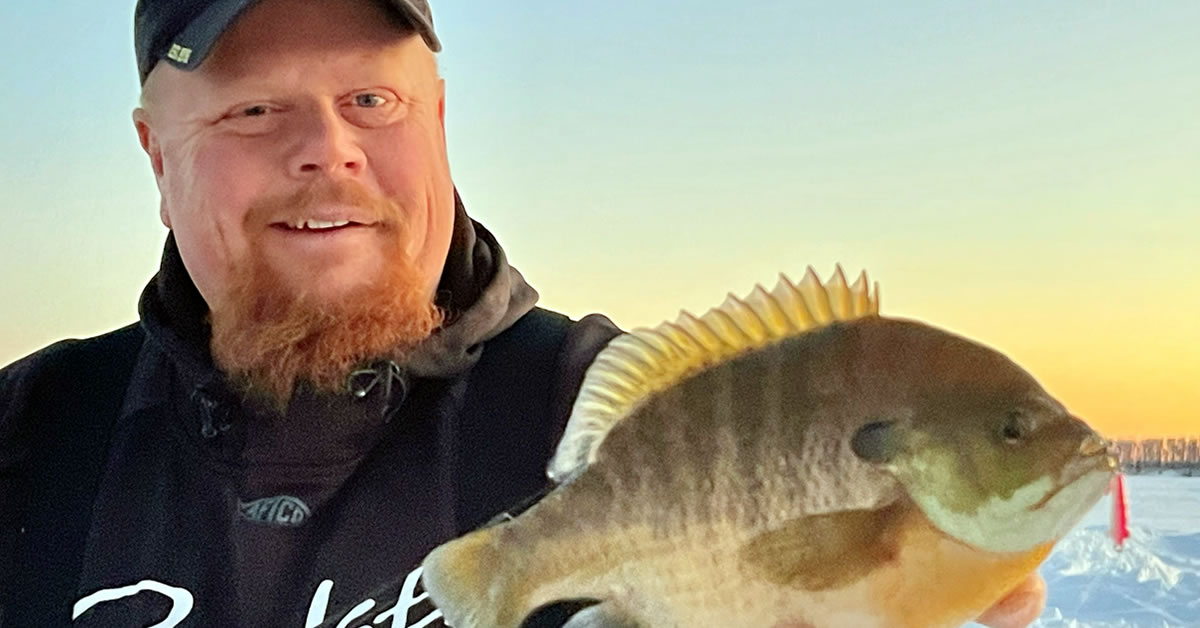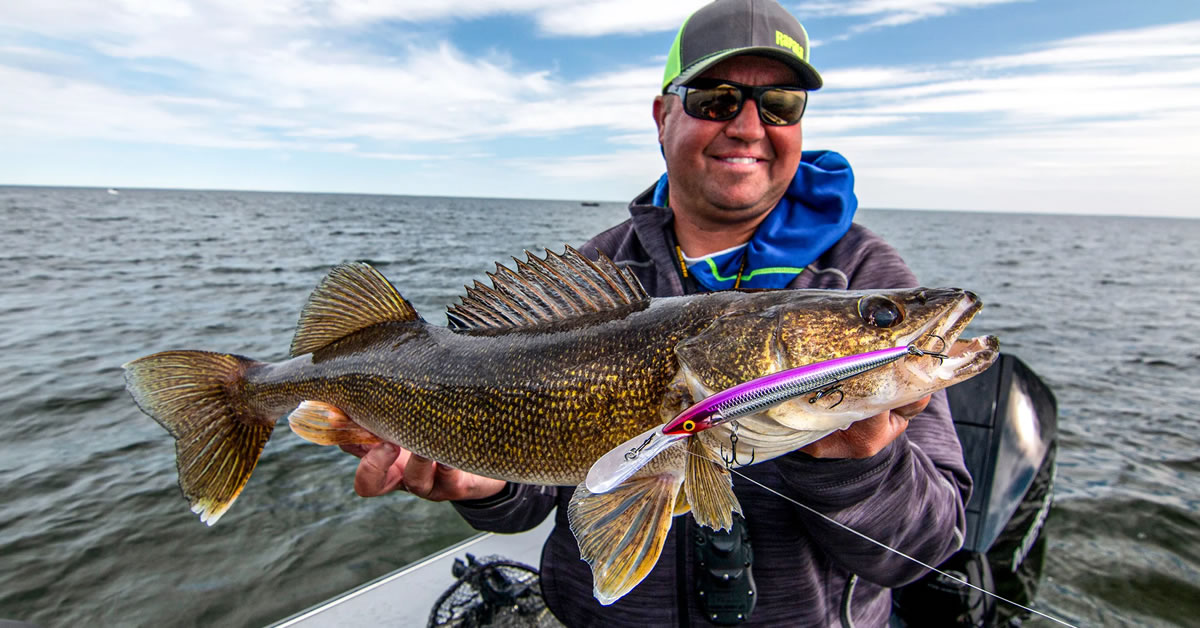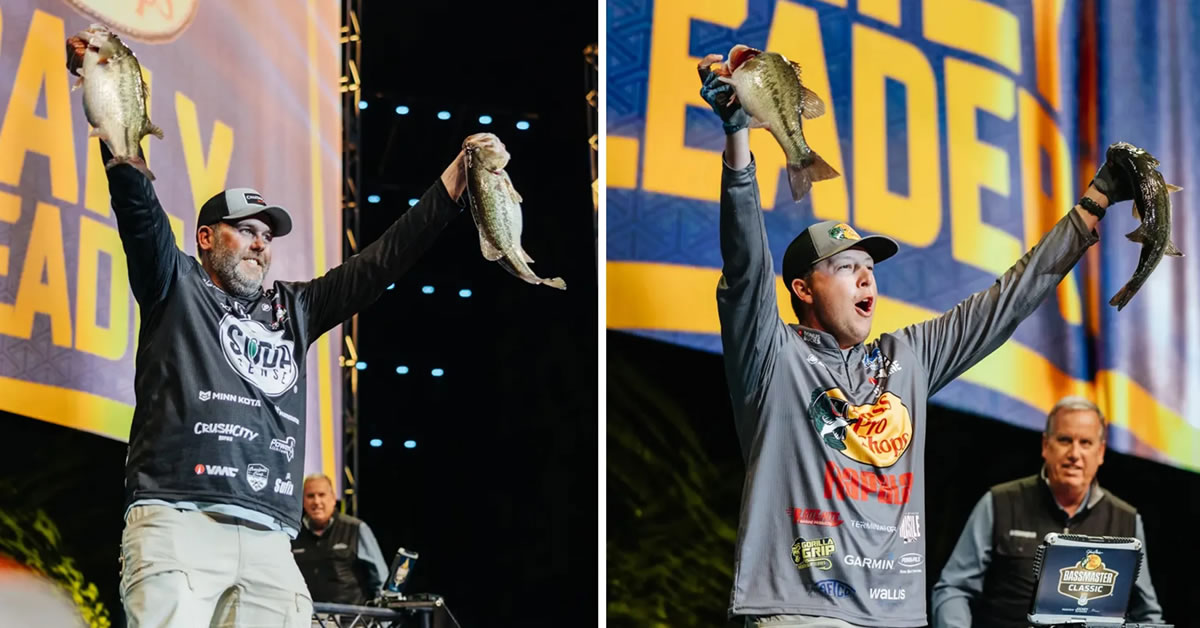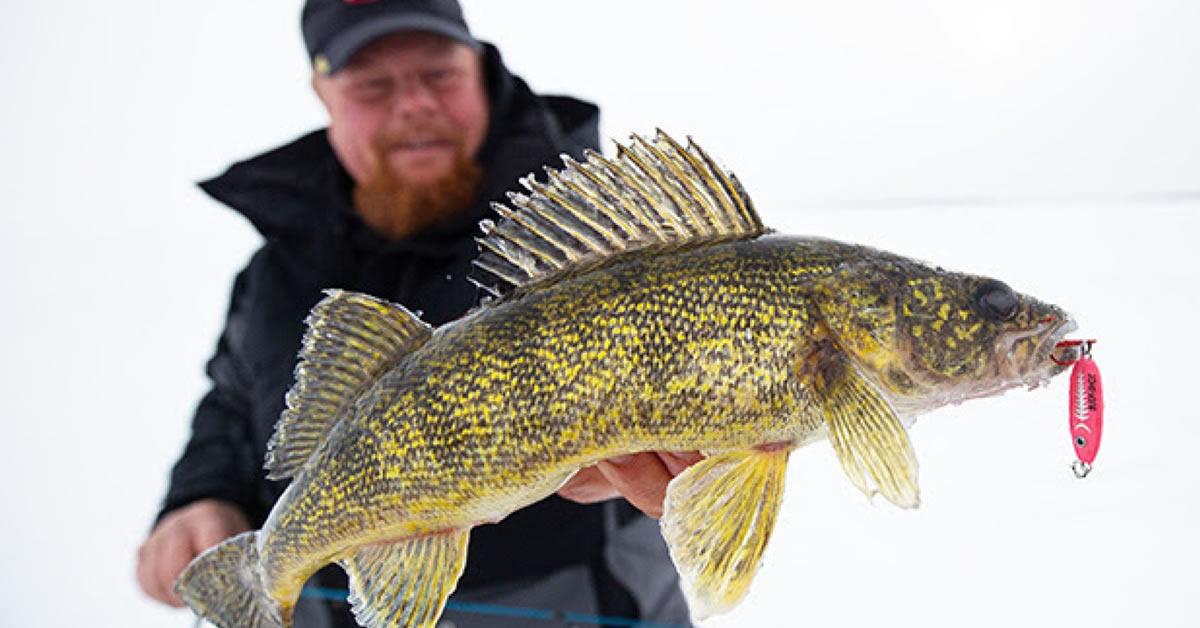Pull Position Walleyes
by Jason Mitchell
.jpg) I am convinced that in order to really catch walleyes through the ice, you have to be good at finding fish. The first people on a school score big. By the time word reaches the bar, the bite is over. People who are always hitting new ice and checking fresh spots are usually one step ahead of the crowds. By venturing out and finding fish, you can also fish much more aggressively for a few different reasons. In order to find fish, you have to check locations and fish through spots fast. Typically, I stop on a spot and drill holes over what I believe are the best locations on a particular spot. Drop down and fish aggressively just to see if anybody is home. Don't bother setting up camp when you are in search mode. When fishing fresh ice that hasn't been pressured, you can usually get some sign of life relatively quickly. When I am looking for fish, all I want to do is mark fish that I am pretty sure are walleyes. After you find fish, you can slow down or make sure you are on the spot during the prime windows during the morning and evening. Here is the other kicker however, regarding looking for fish. Fresh fish act much differently. When a school of walleye are set up on a spot and you are the first line in the water in front of those fish, they are typically more aggressive because of how these fish are schooled. Higher concentrations of fish create a more competitive nature amongst each individual fish. When working a lure aggressively in these situations, the fish that are in the area find you. The race each other and attempt to beat each other to your lure. The density of the school often has more to do regarding the level of aggressiveness than weather or a lot of other factors. Fresh fish bite better.
I am convinced that in order to really catch walleyes through the ice, you have to be good at finding fish. The first people on a school score big. By the time word reaches the bar, the bite is over. People who are always hitting new ice and checking fresh spots are usually one step ahead of the crowds. By venturing out and finding fish, you can also fish much more aggressively for a few different reasons. In order to find fish, you have to check locations and fish through spots fast. Typically, I stop on a spot and drill holes over what I believe are the best locations on a particular spot. Drop down and fish aggressively just to see if anybody is home. Don't bother setting up camp when you are in search mode. When fishing fresh ice that hasn't been pressured, you can usually get some sign of life relatively quickly. When I am looking for fish, all I want to do is mark fish that I am pretty sure are walleyes. After you find fish, you can slow down or make sure you are on the spot during the prime windows during the morning and evening. Here is the other kicker however, regarding looking for fish. Fresh fish act much differently. When a school of walleye are set up on a spot and you are the first line in the water in front of those fish, they are typically more aggressive because of how these fish are schooled. Higher concentrations of fish create a more competitive nature amongst each individual fish. When working a lure aggressively in these situations, the fish that are in the area find you. The race each other and attempt to beat each other to your lure. The density of the school often has more to do regarding the level of aggressiveness than weather or a lot of other factors. Fresh fish bite better.
Typically what happens after a school has been worked over is the big school gets broken up into remnant small pods of fish that are more scattered. Typically as well, the overall size drops when a spot gets pressured because the big fish suppress the actions of smaller fish. Take the big fish out of the equation and then the small fish get a chance to get to the lure. When these schools get broken up and pushed around, they become less aggressive and harder to catch. By now, word has reached the pub that the walleyes are biting on such and such point. At this point, the aggressive presentations often quit working and the game becomes a dead stick game where dunking shiners or minnows will keep picking off these less aggressive fish. So if you sit on these good spots dunking minnows, you are going to catch some fish but you can catch so many more fish if you put in the work to find new fish and fish aggressively.
What is fishing aggressively? Attitude matched with lures that will pull fish into you from a long distance. The lure is a dinner bell and you as an angler have to ring that bell. You have to move enough water and create enough flash to bring in aggressive fish. In some situations especially after dark or in stained and turbid water, noise can also call fish in. Aggressive fish or fish that are schooled in a way to create the competitiveness described above want the aggressive lure. These fish are looking for a meal and want to gun down that meal before the rest of the fish around them. This is a hard adjustment for some anglers to make. Many anglers make the mistake of not jigging enough, call the fish in. Jig that lure like you are swinging a hammer. Seeing fish on the Vexilar is half the battle. By jigging aggressively in these situations, you just see more fish because more fish can feel and see you from further away. Once fish arrive and you can see fish, you might have to back off and get more subtle and that is why you have to use a Vexilar so that you can watch how these fish respond to every move you make. So often however, these fish respond to your attitude. What I mean by this is if you fish with a finesse mindset, you will get subtle bites. If you fish aggressively, you will get fish that come in and tear the rod out of your hand.
Aggressive lures basically fall under three different categories: horizontal swim lures, spoons and rattle baits. As a general rule of thumb, super clear water often dictates a longer jig stroke higher off the bottom where fish can see the lure from further away. Stained water often seems to dictate a tighter, harder pound that ranges from six inches to a foot to call fish in. Never be afraid however to occasionally rip the lure high off the bottom regardless because a high lift often brings fish in. I cannot tell you how many times a fish came in hot as I reeled my lure up fast and I dropped back down and caught that fish. In stained water or after dark, I personally like rattle baits or lures that rise straight up and drop straight down as the fish seem to be able to hone in on these lures better. In water with really good visibility, lures that wander or swing out on the drop often work better for bringing in fish. Regardless of lure however, I like to make the bait somewhat predictable when a fish noses in. Make the bait predictable by keeping your cadence the same where the lure keeps landing right in the same spot or slowing lifting away where a fish can find it. When a fish is right on you, you do not want to rip the lure and have it fall behind the fish where they cant find it. This happens a lot where fish come in hot and if they over shoot the lure, they cant see the lure anymore. When a fish is right on top of you and acting weird, raise the lure back up and pound it to see if you can turn the fish back around. If a fish starts to drift off, raise the lure and pound it hard to get the fish to turn towards the lure. FIsh that are following you up and down and are all over you will often punch the lure when the lure comes to a momentary stop.
How long should you stop the lure? Here is my tip. Drop the lure down the hole and watch the lure as it hangs still. Even with a swivel above the lure, aggressively jigging a lure will twist up the line enough to cause the lure to turn slowly when the lure is dead still. When you drop the lure into the water and watch it, there is a second or two where the lure hangs before it slowly spins. Typically the lure will spin slowly a certain direction and than stop and counter turn the other direction after a few more seconds. Get a mental timeline in your head of these two factors on your lure. That few seconds you have before the lure turns is the first and most important trigger most days, interrupt your jigging cadence with just a momentary stop that you time in your head as just long enough before the lure turns. That usually gets bit. If that doesn't work, bobble the lure just enough to rock the bottom treble hook and this also counters some of the spin so that the lure stops turning. For more difficult fish, hold the rod still and pull the last move, let the lure turn until it stops and than counters, turning the opposite direction. This last move takes a few more seconds and when the lure stops turning and starts to turn the opposite direction, that moment is typically when the fish will hit the lure. Here is where taking good care of your line and using swivels can help you catch more fish, it you have good line that is not twisted, this counter turn where the lure stops and turns the other direction happens much sooner and you are more likely to catch that fish. If you are using really twisted line and are not using any swivel to absorb some of the twist that is created by working lures aggressively, you have to wait much longer for the lure to stop turning before the lure stops and turns the other direction. When the lure turns for a long time before counter turning or turns fast, the fish drift off and your only option is to catch that fish by keep jigging the lure aggressively after you pull the fish in.
Getting back to lures, there are a few key baits that you don't want to hit the ice without. Horizontal swim baits shine when you are fishing water that has good visibility. For water less than fifteen feet, Chubby Darters are tops for pulling in fish. The key to fishing the Chubby Darter is to pound the lure hard, get the lure to dance and shimmy. That particular lure drives walleyes crazy if you fish it aggressively with a short hard pound. Another top horizontal swim lure is the Northland Tackle Puppet Minnow. Puppet Minnows can be fished very similar and are a great versatile lure that fish well in deeper water and current. I love horizontal swim lures and am very confident with these lures most of the time. There are exceptions, however. In really dingy or turbid water, I often switch over to rattle baits like the Salmo Zipper. These baits put off a lot of vibration and are loud under water. The zipper is so loud, I can actually hear the bait when I fish it at times…. under the ice. One of the most effective ways I have found to fish rattle baits in deeper water is to drop the bait down and than reel up the bait about five to ten feet fast enough to cause the lure to vibrate, this really calls fish in and often gets fish to shoot up off the bottom where they can be easy to catch. Once a fish shows up, I typically just shake the lure in place just above the fish. Fish that are high off the bottom usually dunk the rod tip pretty good when they hit. The strength of spoons is that they are so versatile. There are not many places I can think of where you cannot catch walleyes with spoons. Again, in clear water, flutter spoons or brass slab spoons like a Macho Minnow are often better. On the flip side, in stained water or during low light, choose spoons that drop straight down. One of the best spoons ever made in my opinion for walleyes is a Northland Tackle Buckshot Rattle Spoon. The strength of this spoon besides a rattle chamber is that this spoon drops like a rock right back to the same spot every time and fish can find this lure easy. Another great low light, stained water spoon is the Northland Tackle Whistler Spoon that is new for this ice season. I had a lot of time on the ice testing this spoon last winter and this particular spoon with the blade attachment sends off a lot of vibration on the upstroke but with the blade attachment this brass spoon falls straight down predictably…. perfect attributes you want in a spoon on places like Red Lake, Lake of the Woods or Devils Lake where visibility isn't always perfect. We caught a lot of walleyes with prototypes of this lure.
I was at a sport show a few winters back and a gentleman told me that my line of walleye rods under the Jason Mitchell Elite Series Brand were too stiff for walleye fishing. The gentleman spent most of his time fishing out of a permanent shack with rattle reels and for that style of fishing, the gentleman was right. If you are sitting on a spot with live minnows and bobbers, the graphite blanks we use are too stiff. When it comes to working the above lures however, you want a fast action graphite blank that can give that lure some pop on the upstroke and also have enough tip to bury that hook when a walleye punches that lure hard. Our lineup of rods were designed specifically for working spoons and swim lures. Too soft of a rod is going to cost you so many missed fish when working lures so that is why we designed the rods that we did. If you leave the rod on the floor of a permanent fish house and have a minnow hanging below a bobber, a rod that has a more parabolic and uniform bend with a softer action is often better. So match your rod to the presentation. I want to stress as well that sitting on good spots with dead rods is not necessarily bad and there are times where that is what you have to do to catch fish but so often, looking for fish and finding fish is so much better if the goal is to catch walleyes. By approaching the ice with an aggressive mindset and focusing on trusting your electronics with one rod and a handful of good lures, covering water until you find fresh fish…. that my friends is how you can really catch a lot more fish most days on most bodies of water. Many anglers start out fishing with live bait and dead rods and out of frustration if that doesn't work, they switch to aggressive fishing techniques, I urge you as an angler to do the opposite. Start out covering water and looking for fish and fish aggressively. After you find the fish and give them the work over, than you can often coax out one or two more days off the spot with tip ups, dead rods and minnow dunking just to eek out the spot a little more. This aggressive fishing mentality however allows you to cover water and find fish. The emphasis is finding fish, when you find them and the spot is fresh…. you are going to catch so many more fish.




